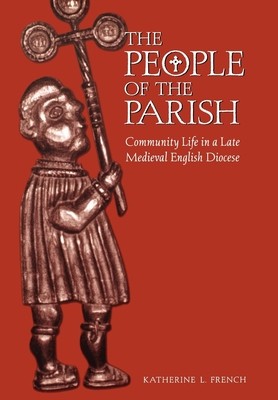
- We will send in 10–14 business days.
- Author: Katherine L French
- Publisher: University of Pennsylvania Press
- ISBN-10: 0812235819
- ISBN-13: 9780812235814
- Format: 15.2 x 22.9 x 2.2 cm, hardcover
- Language: English
- SAVE -10% with code: EXTRA
Reviews
Description
The parish, the lowest level of hierarchy in the medieval church, was the shared responsibility of the laity and the clergy. Most Christians were baptized, went to confession, were married, and were buried in the parish church or churchyard; in addition, business, legal settlements, sociability, and entertainment brought people to the church, uniting secular and sacred concerns. In The People of the Parish, Katherine L. French contends that late medieval religion was participatory and flexible, promoting different kinds of spiritual and material involvement.
The rich parish records of the small diocese of Bath and Wells include wills, court records, and detailed accounts by lay churchwardens of everyday parish activities. They reveal the differences between parishes within a single diocese that cannot be attributed to regional variation. By using these records show to the range and diversity of late medieval parish life, and a Christianity vibrant enough to accommodate differences in status, wealth, gender, and local priorities, French refines our understanding of lay attitudes toward Christianity in the two centuries before the Reformation.EXTRA 10 % discount with code: EXTRA
The promotion ends in 18d.15:28:52
The discount code is valid when purchasing from 10 €. Discounts do not stack.
- Author: Katherine L French
- Publisher: University of Pennsylvania Press
- ISBN-10: 0812235819
- ISBN-13: 9780812235814
- Format: 15.2 x 22.9 x 2.2 cm, hardcover
- Language: English English
The parish, the lowest level of hierarchy in the medieval church, was the shared responsibility of the laity and the clergy. Most Christians were baptized, went to confession, were married, and were buried in the parish church or churchyard; in addition, business, legal settlements, sociability, and entertainment brought people to the church, uniting secular and sacred concerns. In The People of the Parish, Katherine L. French contends that late medieval religion was participatory and flexible, promoting different kinds of spiritual and material involvement.
The rich parish records of the small diocese of Bath and Wells include wills, court records, and detailed accounts by lay churchwardens of everyday parish activities. They reveal the differences between parishes within a single diocese that cannot be attributed to regional variation. By using these records show to the range and diversity of late medieval parish life, and a Christianity vibrant enough to accommodate differences in status, wealth, gender, and local priorities, French refines our understanding of lay attitudes toward Christianity in the two centuries before the Reformation.

Reviews